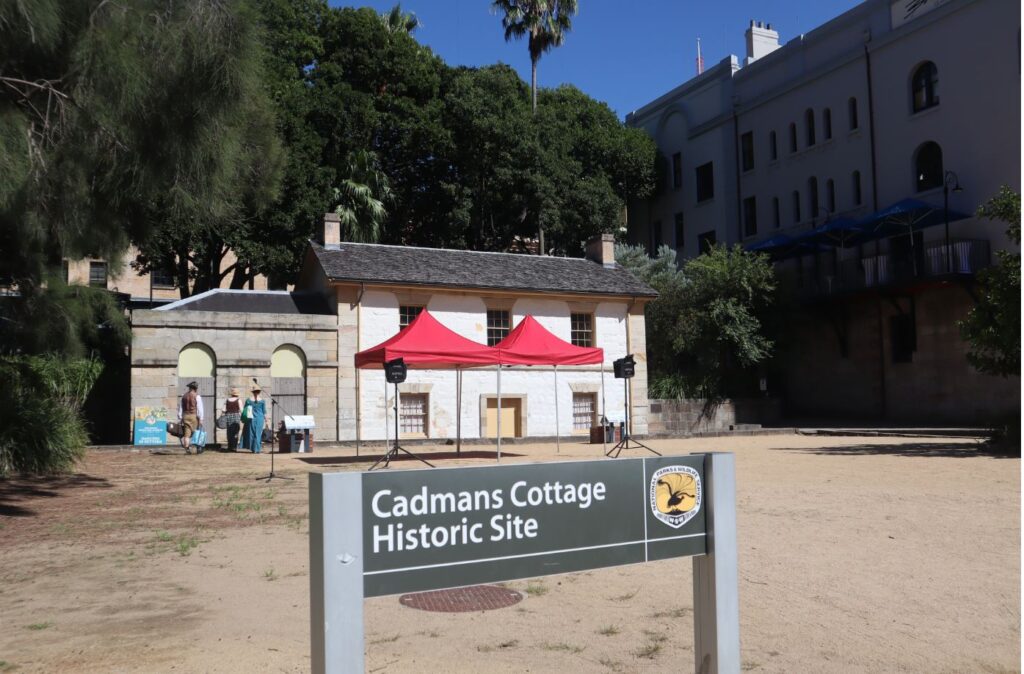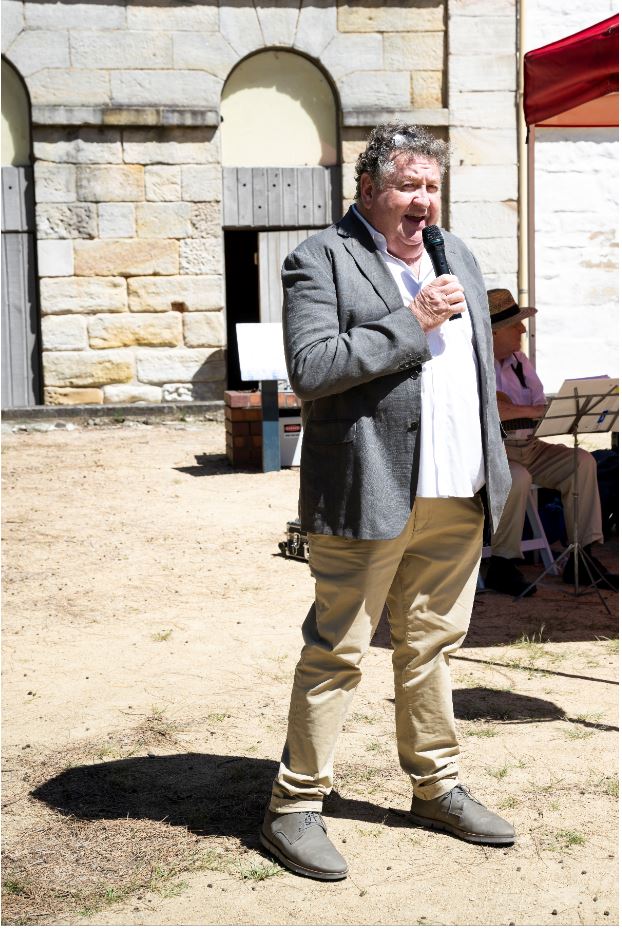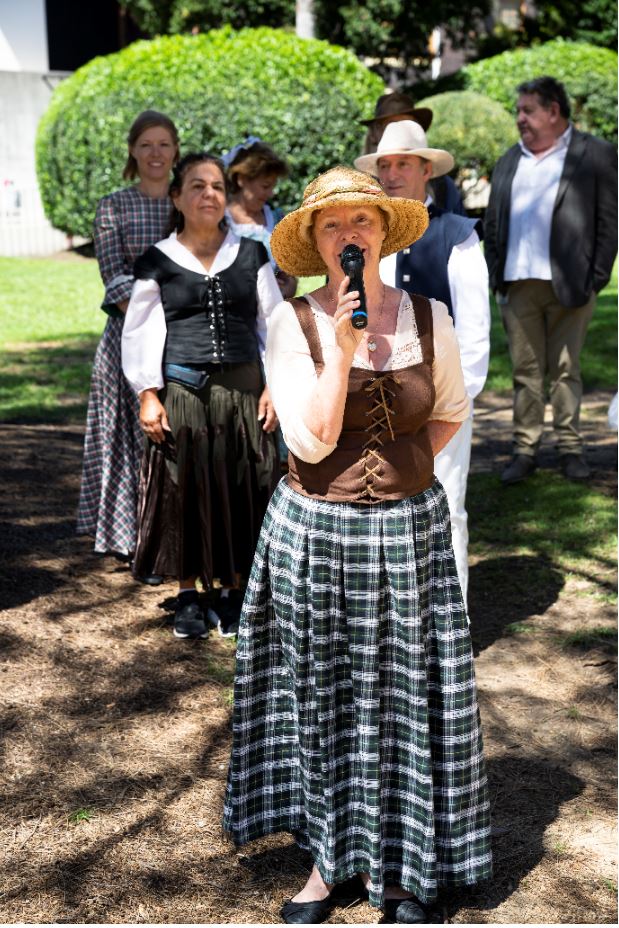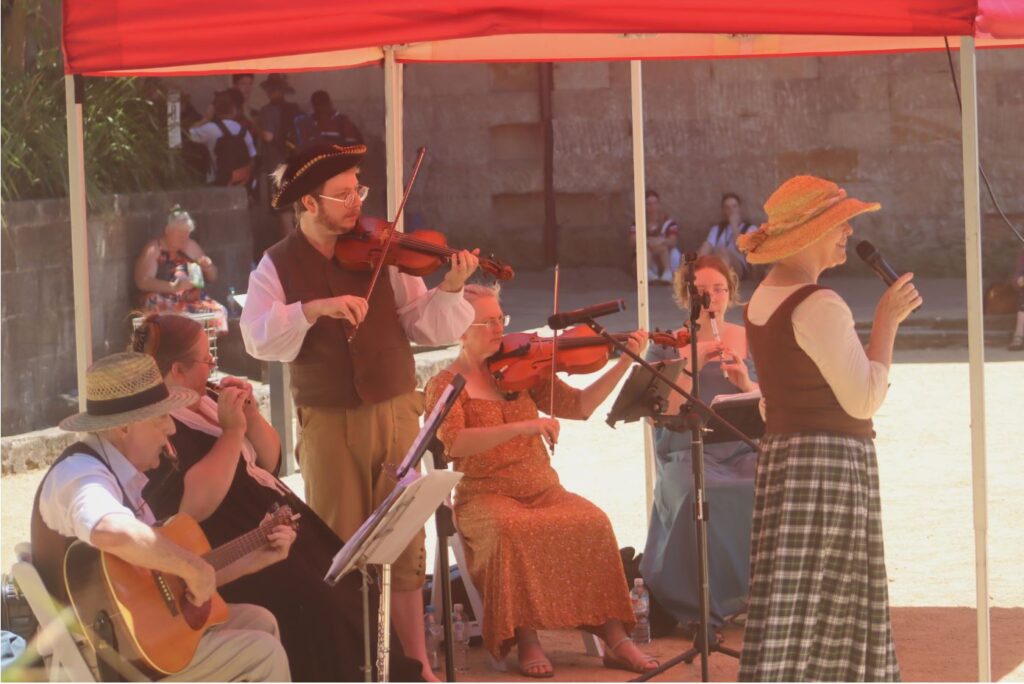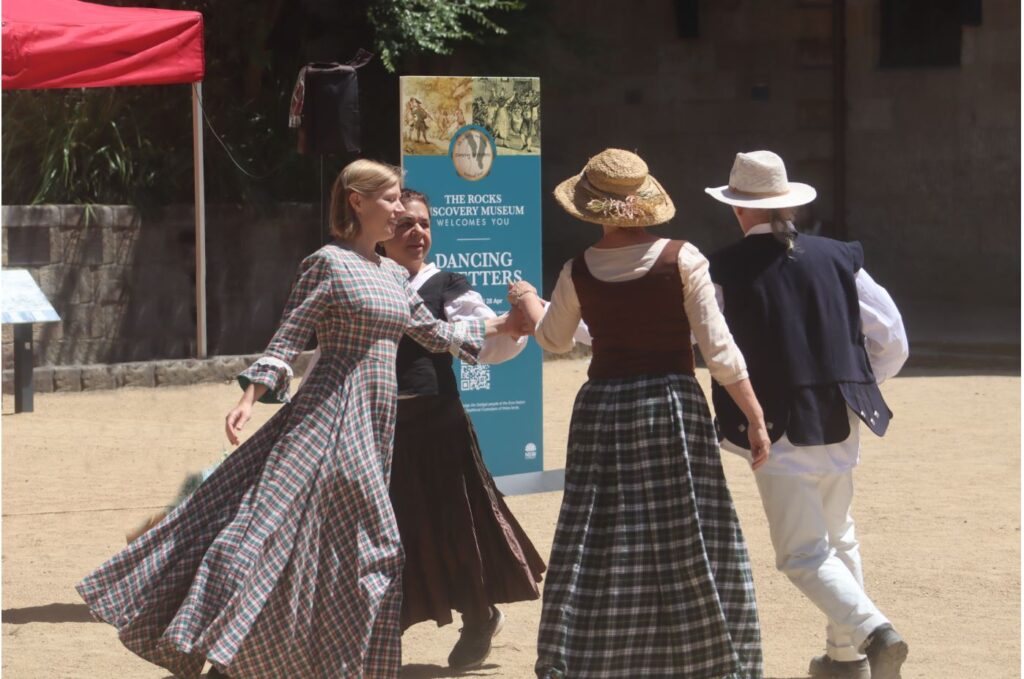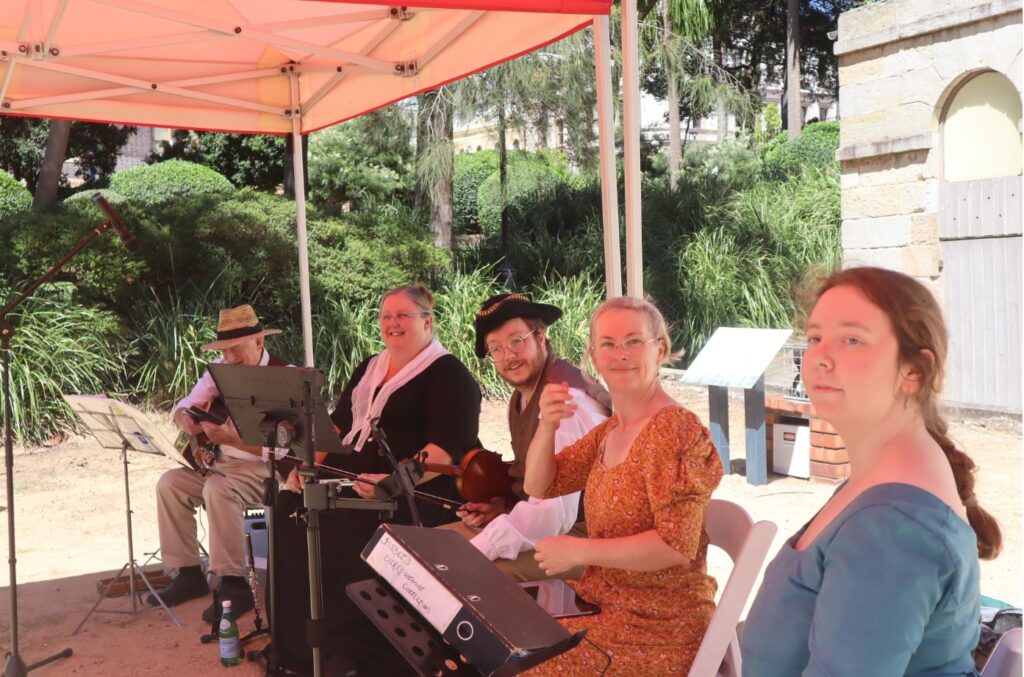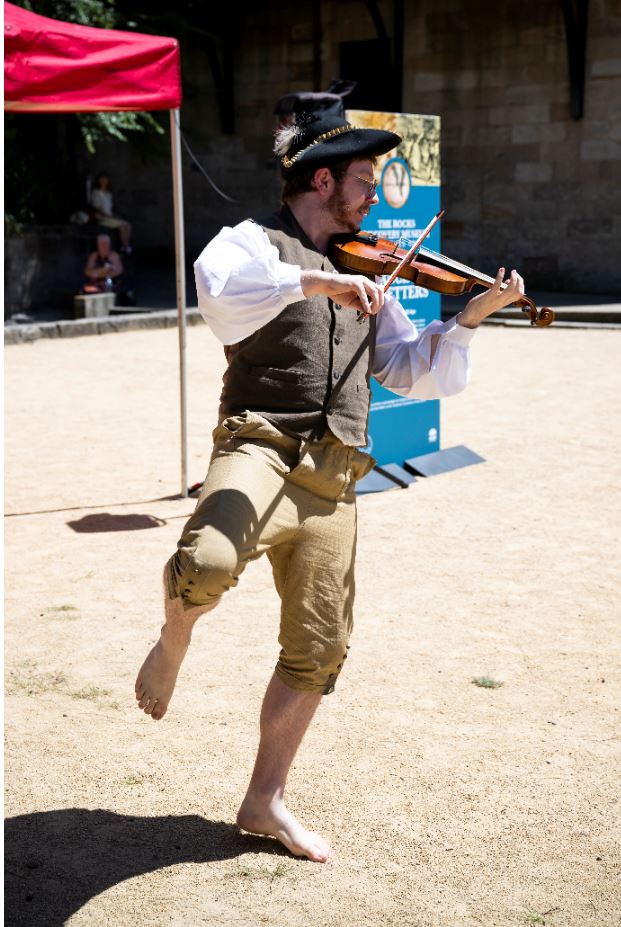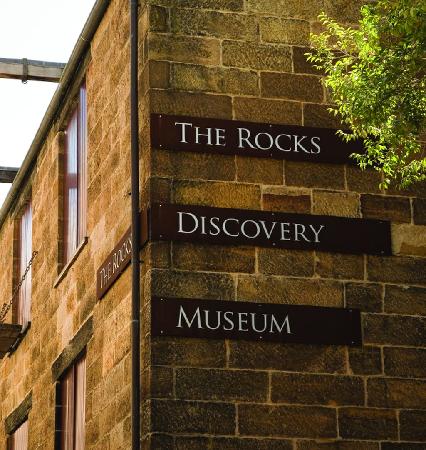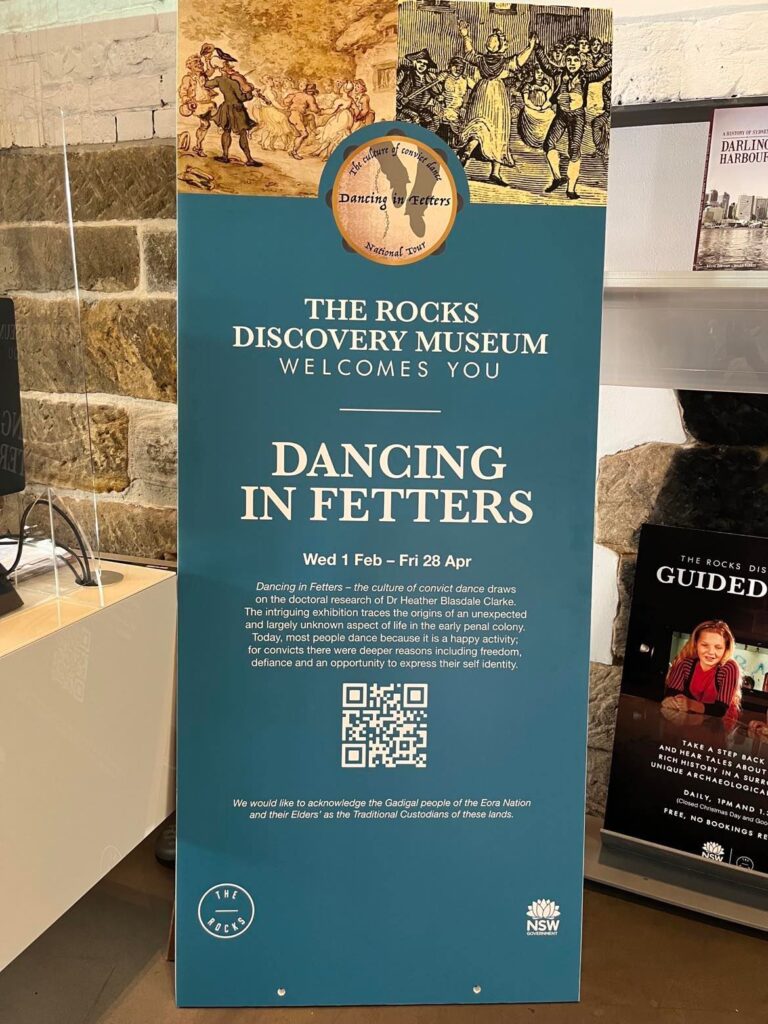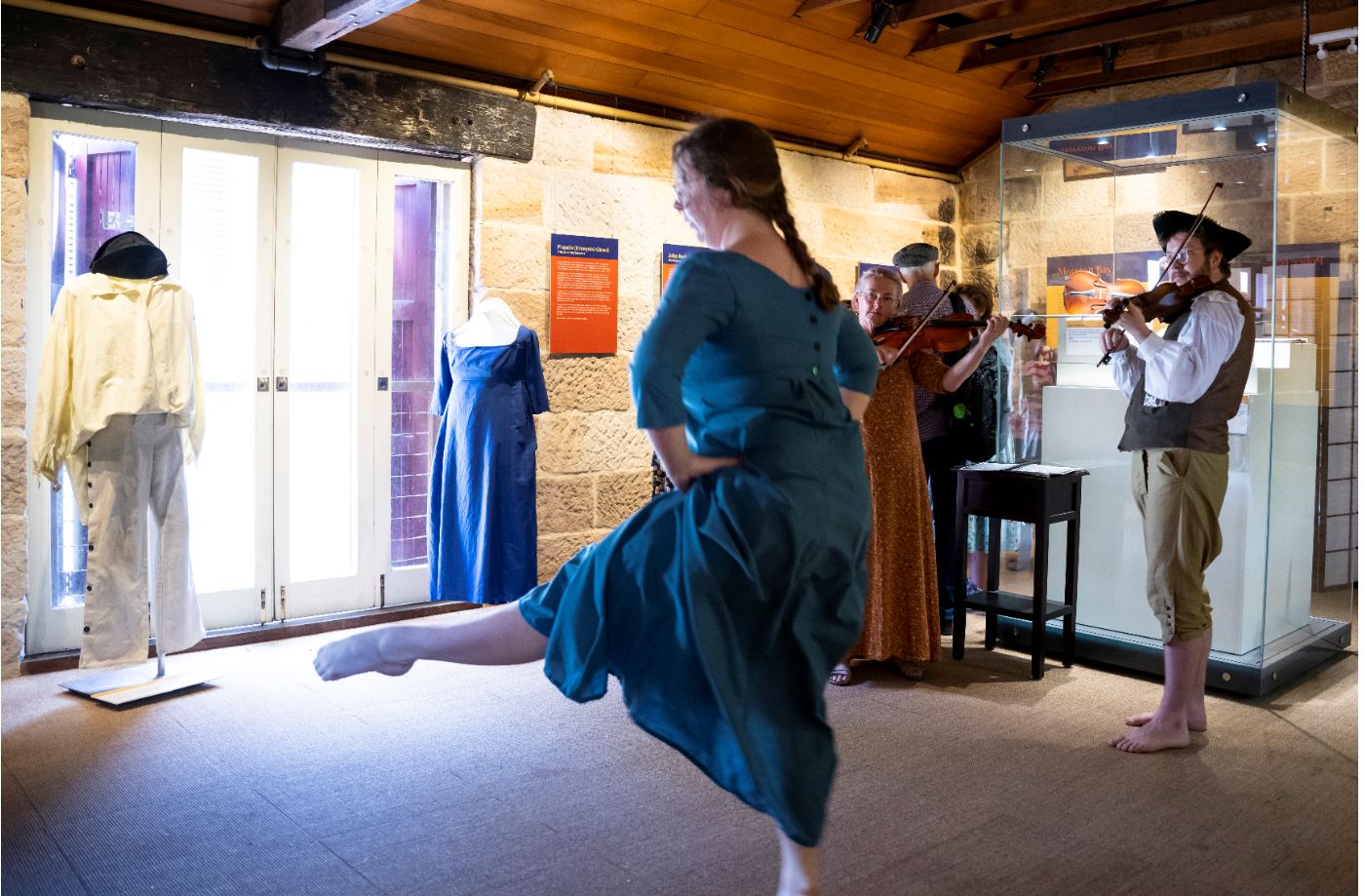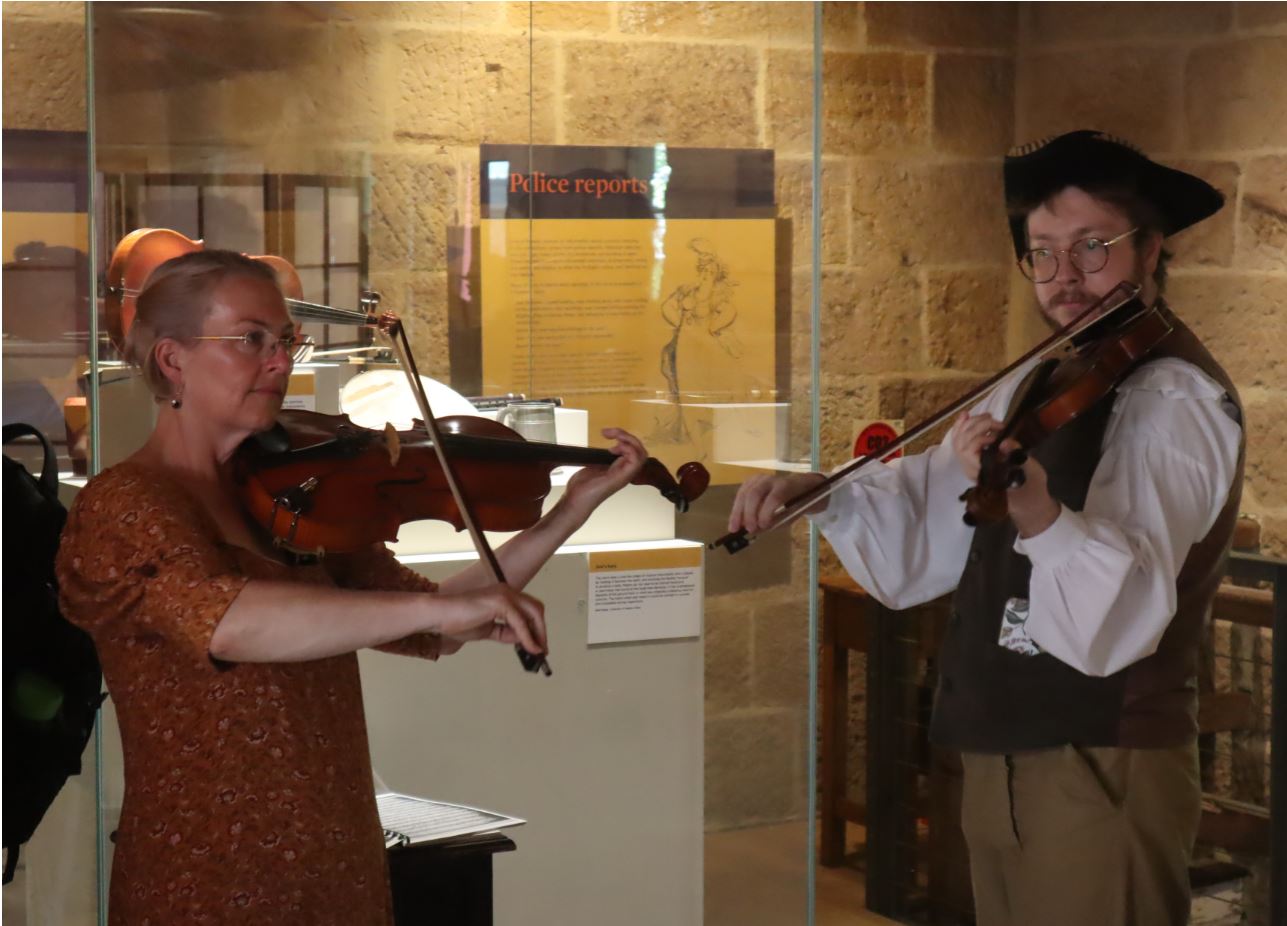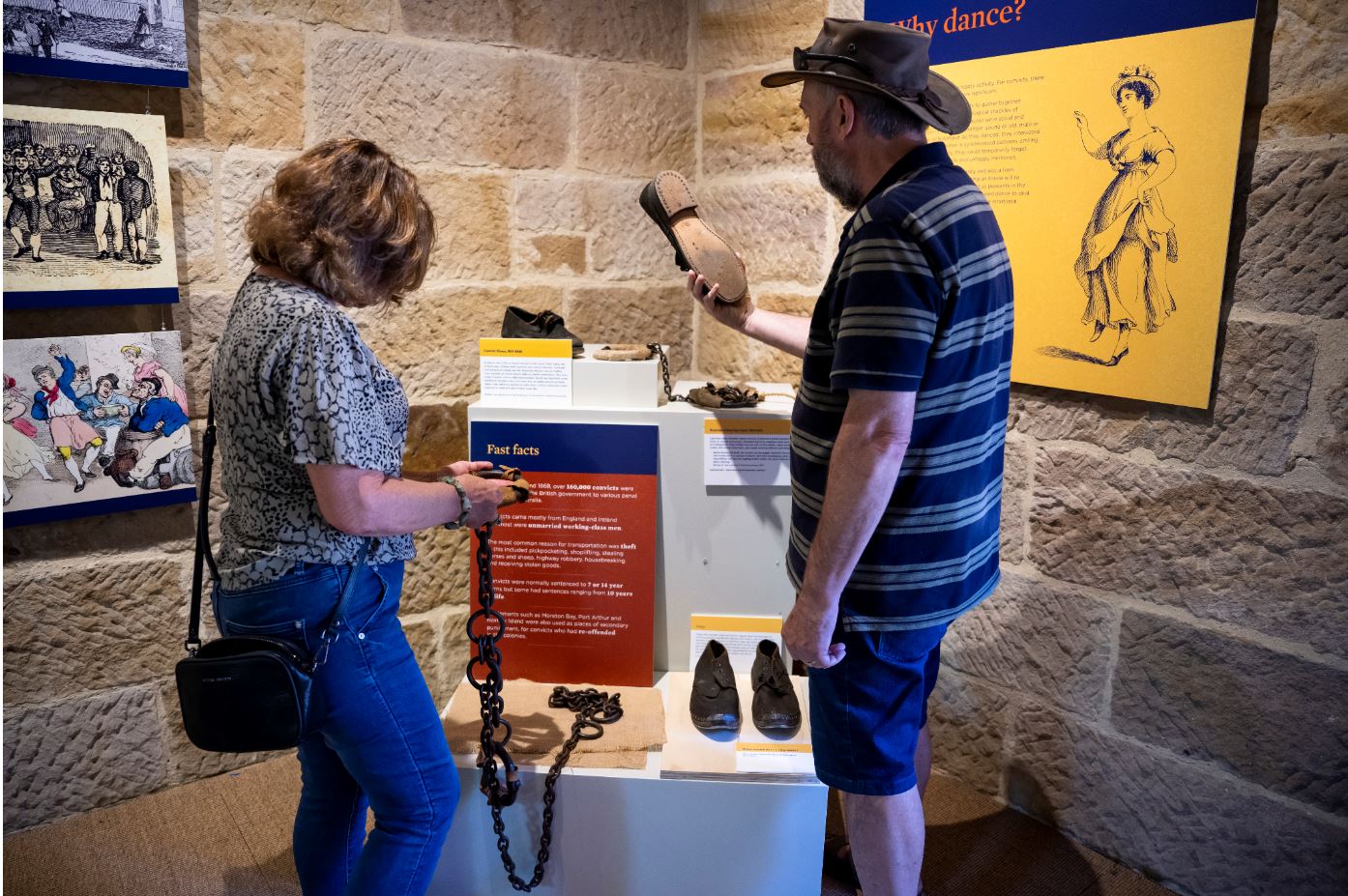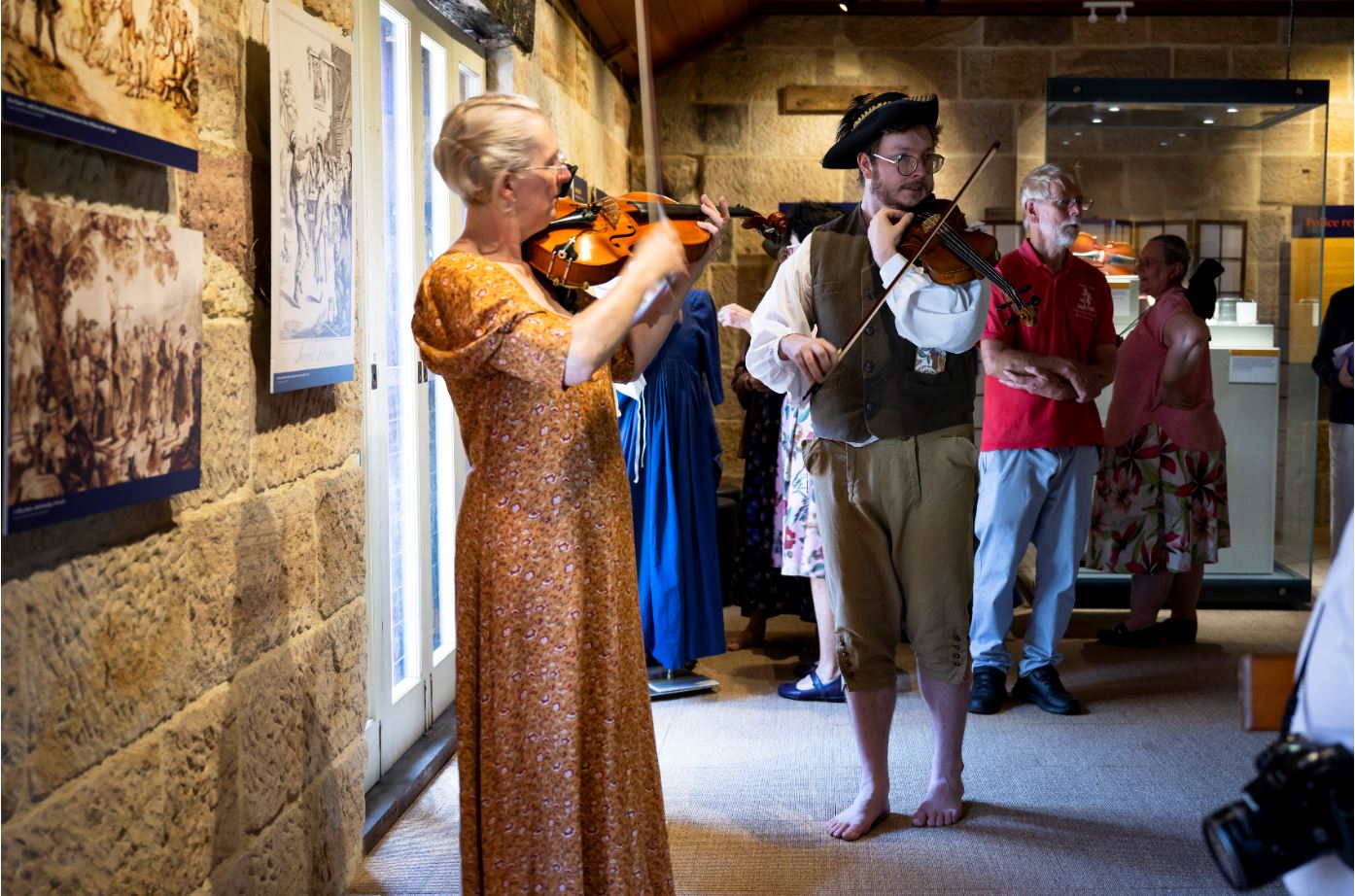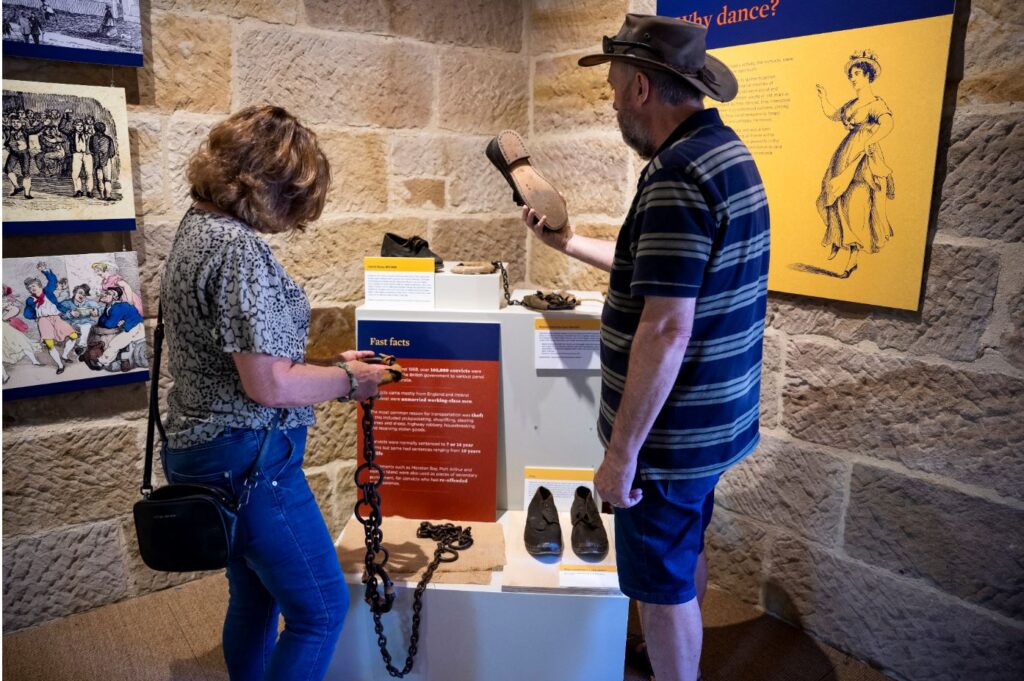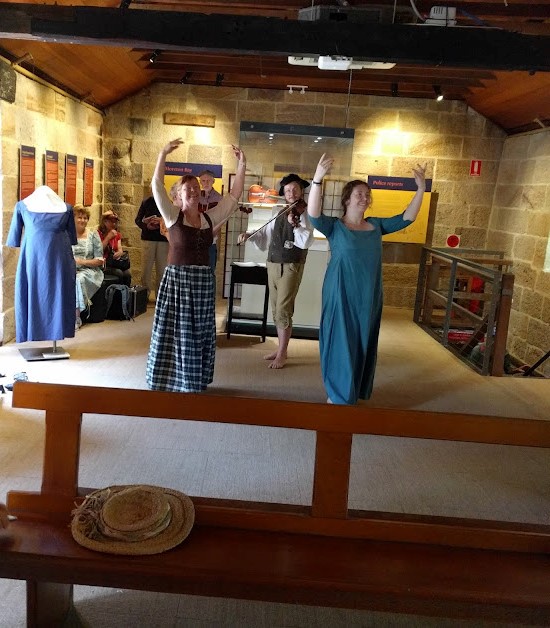We are excited to announce an additional venue in our tour! Rocks Discovery Museum in the heart of Sydney, is set to host the Dancing in Fetters exhibition from 1 February to 28 April, 2023.
The Rocks is a perfect venue!
From the first days of the colony, the Rocks was at the epicentre of the popular culture beloved by the convicts and lower orders. On the step rocky slopes, a jumble of dwellings, lodging houses, taverns, shops and bawdy houses arose— akin to any lower order quarter in an English town. It was here the culture they bought with them flourished— music, dancing, and singing, as well as the less salubrious activities of drinking, fighting, and gambling. For convicts and seamen arriving in Sydney town, it was the first place they saw and it “signalled welcome, a familiar place in an alien land”.1
Most of the time, the leisure activities of the ‘lower orders’ as they were then known, passed without notice, but occasionally they were scrutinized—not always favourably.
Sometimes merely as a satirical observation:
On the evening of Saturday the 7th instant a Celebration of Nuptials took place on the Rocks, …the merry dance commenced, and the fair bride led down the Country Bumpkin*, which was performed in character. The Cheshire rounds* and the Irish trot* were also gone through with equal success…2
*the names of dances
And at other times with a degree of contempt. A number of people in authority viewed the Rocks as disreputable place, just as they considered the ‘lower orders’ to be filthy, depraved, lazy and insolent.
… it was felt they gambled and drank and danced too much.3
They also considered their pastimes as vulgar and ill mannered.
…upon my stepping into a house of HARMONY a few nights ago, … an illegitimate descendant of Apollo [fiddler] sat moving his elbow to a group of caperers whose motion rendered it difficult to determine whether he scraped to their dancing or they hopped to his fiddling. I BELIEVE they were all human beings….4
In the 1820s, Commissioner Bigge reported on the state of the colony and complained that there were too many public houses, and too many licenses for people holding dances!

The most comprehensive information about dancing in the Rocks comes from Police Reports. Although dancing was not illegal, many associated factors lead to it being reported: dancing in an unlicensed public house, dancing after curfew, dancing while absent without the master’s permission, dancing in the street, and disturbing the peace.
An important account comes from the trial of Jeremiah Byrne who was brought before the court charged with being absent without permission. He was a dance musician in the hop shops (dance halls) on the Rocks and describes the tunes he favoured:
Jeremiah Byrne, an itinerant, who is in the habit of spliting the ears of the groundlings at the two-penny hop shops on the Rocks, was placed at the bar, having been taken out of one of those public nuisances at a very late hour of the night.
A man named Brown to whom he is assigned, denied that he had his permission to be absent from home, and the Bench accordingly called upon him to know what he had to say for himself,
“Why may it please your Worship” said, Jeremiah Byrne, “I’m a musicianor, and I plays on the flageolet, I can play, ‘Bobbing Joan’, ‘Darby Kelly’, ‘Paddy Ward’s pig,’ or ‘Judy Callaghan’ with any musicianer in the country;” and thereupon Jeremiah Byrne placed his flageolet to his mouth, and struck up a tune that had well nigh inflicted the Cholera Morbus on all present.
“Do you call that playing?” exclaimed the constable at his elbow, snatching the instrument, ” I’ll show you how to play you imposter. What will your Honor please to have?”
His Honor however, being perfectly satisfied with the piper’s specimen, declined hearing the indignant constable’s variations, and ordered Jeremiah Byrne, as he must be pretty well tired of piping, to dance for the next seven days.5
Police reports and other accounts weave together to create a rich and vibrant image of the popular culture of music and dance, providing a unique perspective on life in the early colony.
Stay tuned for the launch of this great exhibition, and for a list of other events!
References
1. Grace Karskens, The Rocks. Life in early Sydney. Melbourne University Press, 1997.
2. Sydney Gazette and New South Wales Advertiser (15 May, 1803)
3. Babette Smith, Defiant voices : how Australia’s female convicts challenged authority 1788-1853.(2021).
4. Sydney Gazette and New South Wales Advertiser (17 April, 1803).
5. The Sydney Gazette and New South Wales Advertiser (6 December, 1832).
Official Launch
The Dancing in Fetters exhibition at the Rocks Discovery Museum was launched on 3rd February. The event took place in the forecourt of the historic Cadman’s Cottage, one of the oldest buildings in Australia dating from 1816.
Dr Wayne Johnson, curator of the Rocks Discovery Museum, introduced the exhibition, noting the importance of culture for the First Nations people and the early settlers. A fine band of musicians from Brisbane and Sydney presented a selection of music and songs known to have been popular amongst early Australian convicts. They were joined by a group of Sydney dancers to display some social dances, and the Dancing in Fetters team performed a number of solo dances.
This project has been assisted by the Australian Government’s Visions of Australia funding. Exhibition partners include Abbey Museum of Art and Archaeology and Bush Traditions Inc.
Visit Bush Music Club’s blog for more photos.
Photographs courtesy of Rocks Discovery Museum and Sandra Nixon (Bush Music Club).
